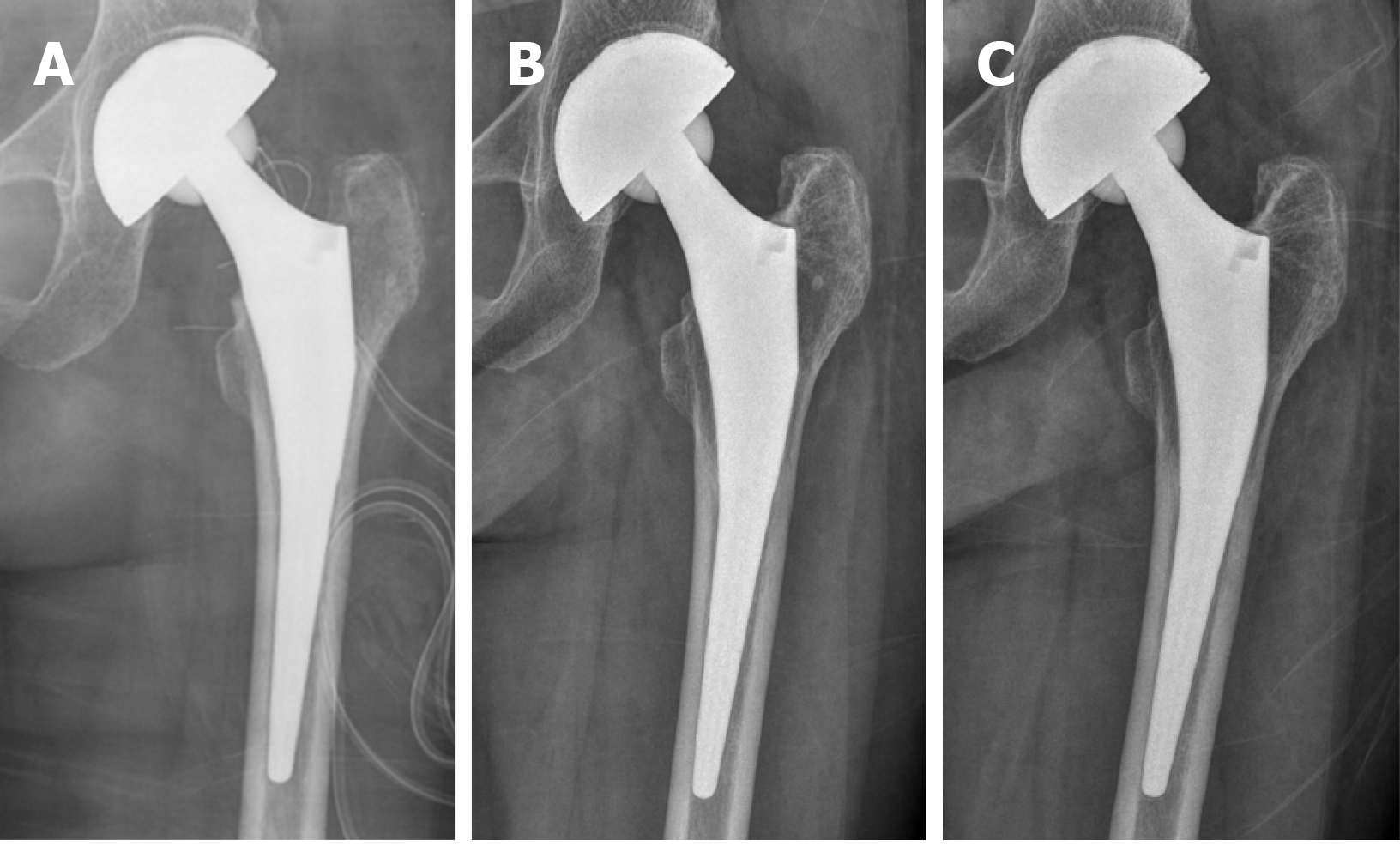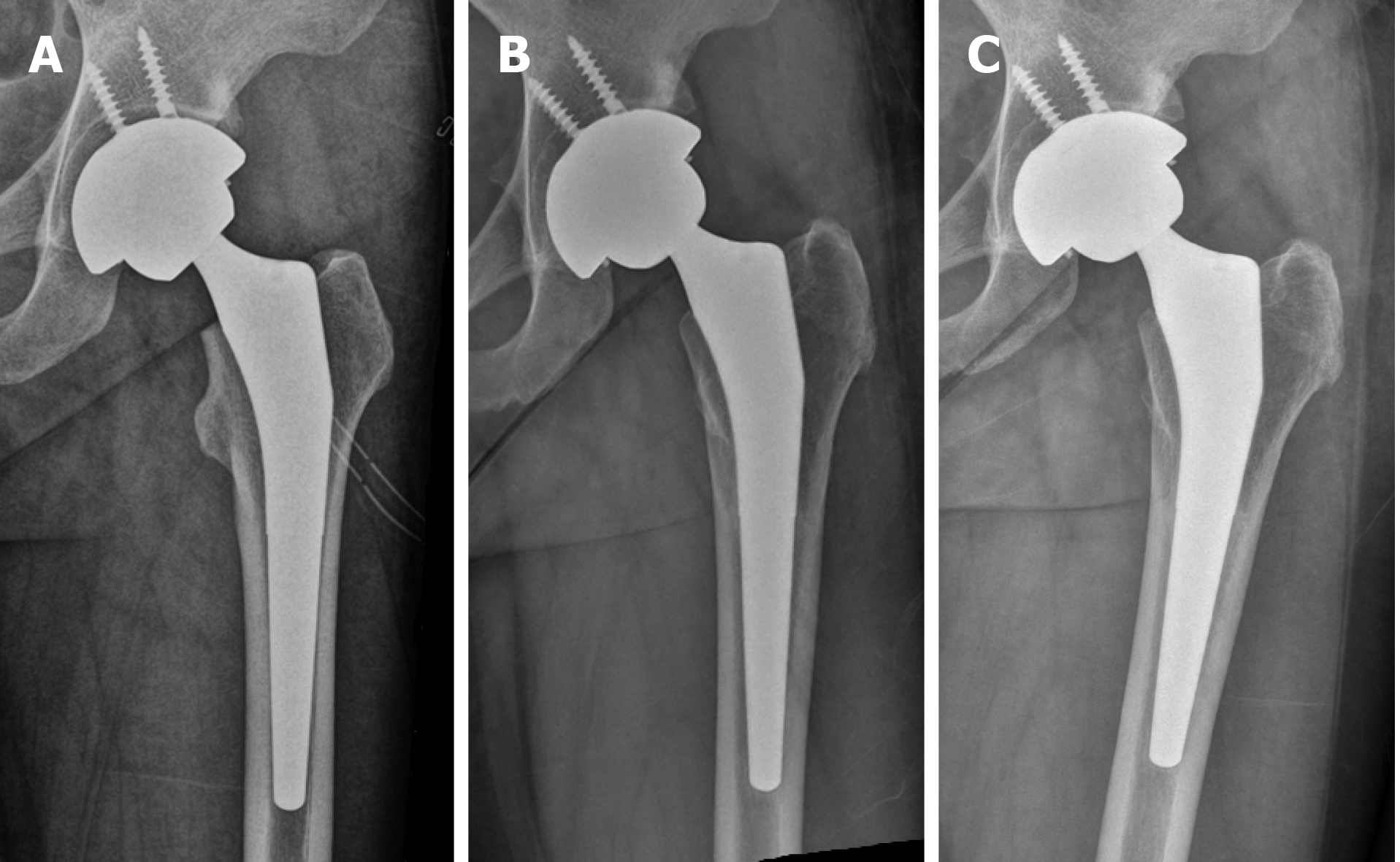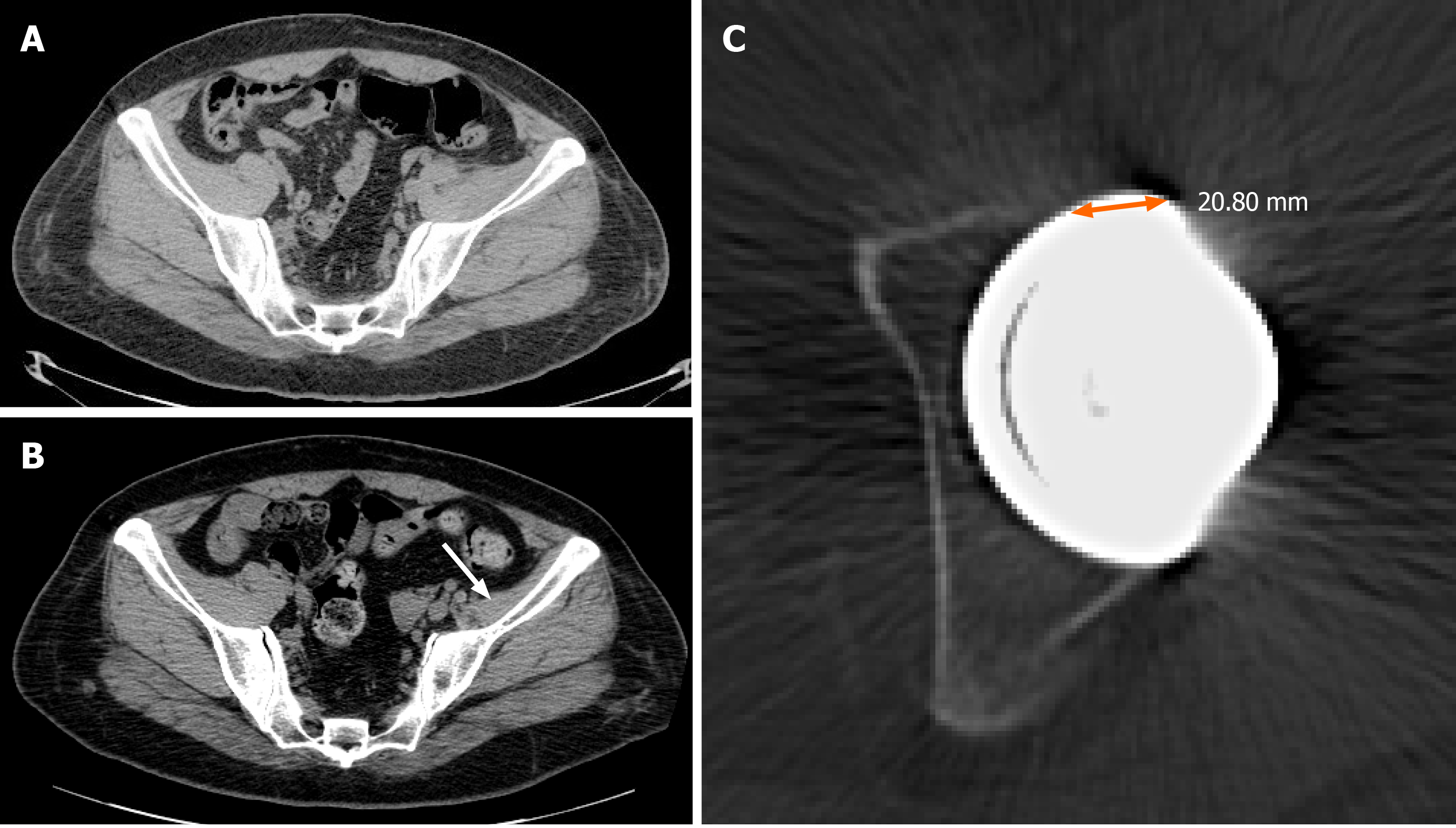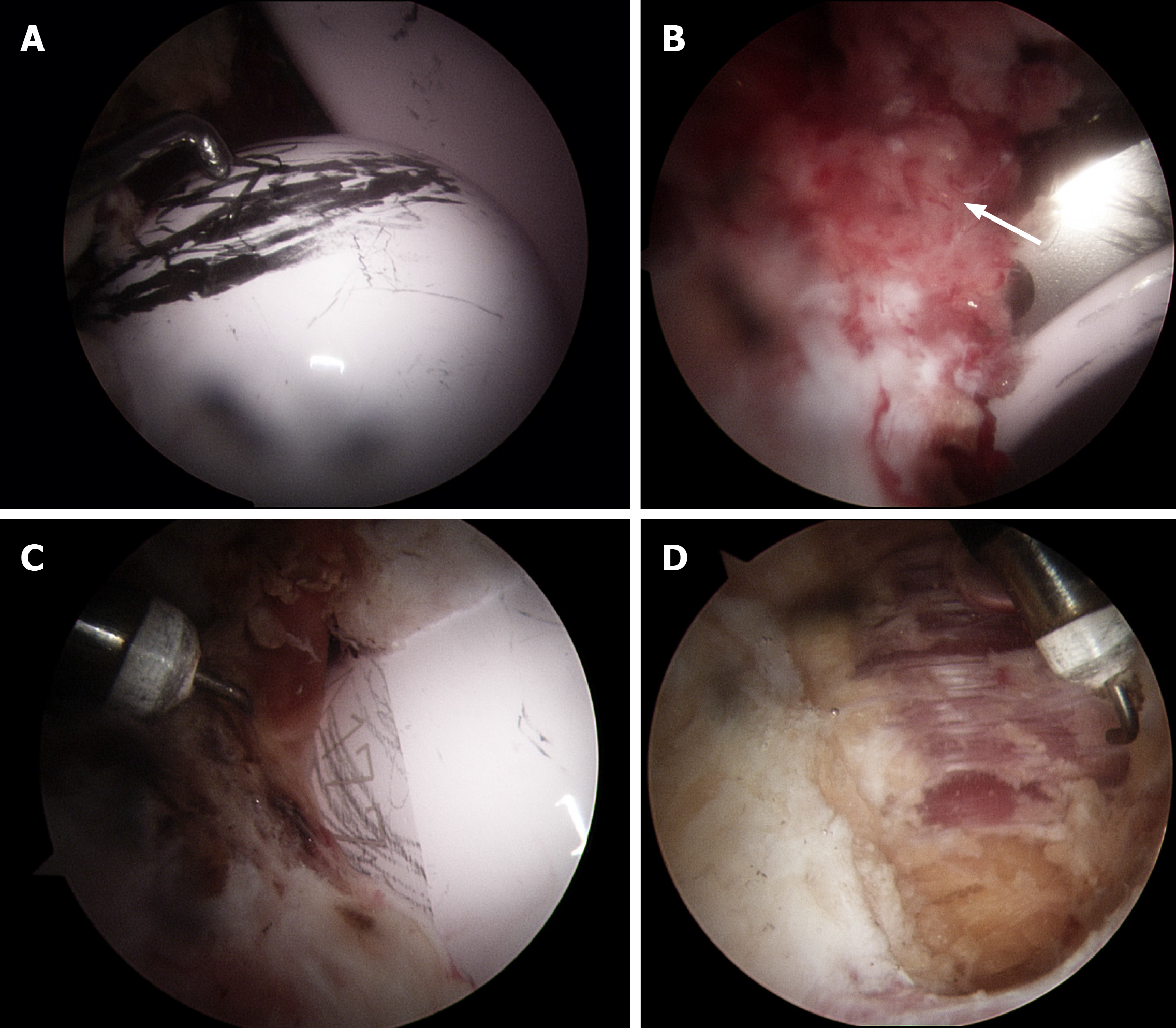Copyright
©The Author(s) 2020.
World J Clin Cases. Nov 6, 2020; 8(21): 5326-5333
Published online Nov 6, 2020. doi: 10.12998/wjcc.v8.i21.5326
Published online Nov 6, 2020. doi: 10.12998/wjcc.v8.i21.5326
Figure 1 Radiographs of Case 1.
A: Radiograph taken immediately after total hip arthroplasty, showing insufficient medialization and anteversion of the acetabular component with an inclination angle of 43 degrees; B: Radiographs taken before arthroscopic iliopsoas tendon release; C: Radiograph taken 5 years after arthroscopic iliopsoas tendon release, which did not demonstrate loosening or osteolysis in comparison with part A.
Figure 2 Radiographs of Case 2.
A: Radiograph taken immediately after total hip arthroplasty, showing insufficient medialization and anteversion of the acetabular component with an inclination angle of 44 degrees; B: Radiograph taken before arthroscopic iliopsoas tendon release; C: Radiograph taken 5 years after arthroscopic release, which did not demonstrate osteolysis or loosening.
Figure 3 Computed tomography scans of Case 1.
A: Computed tomography scan demonstrating anteversion angle of 3 degrees with anterior cup prominence of more than 16 mm; B: Ultrasonography demonstrating tenting of the iliopsoas tendon (arrow) over the anteromedial margin of the acetabular component.
Figure 4 Computed tomography scans of Case 2.
A: Computed tomography (CT) scan taken immediately after perioperative dislocation to evaluate anteversion angle of acetabular cup and stem; B: CT scan taken 2 years after total hip arthroplasty, which demonstrated atrophy of the left iliacus muscle (arrow); C: Anteversion of the acetabular component, with an angle of 4 degrees and anterior prominence of more than 20 mm.
Figure 5 Arthroscopic findings and histological features in Case 1.
A: The capsular opening (white arrow) was enlarged and surrounded with frayed fibrous tissues (black arrowhead) and dark yellow amorphous material (white arrowhead), which looked like granulation tissue (anterolateral viewing portal); B: Partial synovectomy with biopsy (anterolateral viewing portal); C: Iliopsoas tendon release and bursectomy were performed (anterolateral viewing portal); D: Histopathologic study showed chronic inflammation with synovial hyperplasia and hemosiderin pigmentation (arrow; magnification, 200 ×).
Figure 6 Arthroscopic findings in Case 2.
A: Copious metal transfer on the ceramic head might have originated from a previous dislocation-and-reduction maneuver (anterolateral viewing portal); B: This metal transfer was demonstrated on the margin of the ceramic liner (anterior viewing portal); C: Metal transfer was also observed at the bottom of ceramic head, which might indicate impingement of the implants on one another (anterolateral viewing portal); D: Chronic synovitis around the iliopsoas tendon (arrow in B) was identified, and tendon release with partial synovectomy was performed (anterolateral viewing portal).
- Citation: Won H, Kim KH, Jung JW, Kim SY, Baek SH. Arthroscopic treatment of iliopsoas tendinitis after total hip arthroplasty with acetabular cup malposition: Two case reports. World J Clin Cases 2020; 8(21): 5326-5333
- URL: https://www.wjgnet.com/2307-8960/full/v8/i21/5326.htm
- DOI: https://dx.doi.org/10.12998/wjcc.v8.i21.5326














